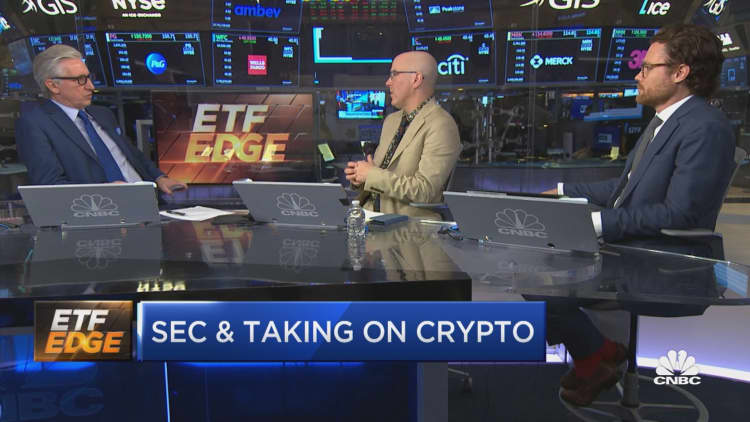
The ongoing court battle to bring a spot bitcoin ETF to market in the U.S. comes at a potential turning point for the token itself, which recently surpassed $30,000 and prompted speculation of a new crypto boom this year.
After Grayscale’s proposal to bring its bitcoin-holding exchange-traded fund to market in the U.S. was rejected last June, the firm sued the U.S. Securities and Exchange Commission. Oral arguments kicked off last month in the District of Columbia Court of Appeals.
“I think the chances are more than 50-50 that [Grayscale] will win in this lawsuit,” Dave Nadig, financial futurist at VettaFi, told Bob Pisani on CNBC’s “ETF Edge” on Monday.
“However, I don’t think that means that we all of a sudden get a bitcoin ETF,” he added. “I think there’s actually a higher likelihood it means that they shut down some of the futures-based products.”
SEC Chair Gary Gensler has argued that bitcoin futures are a regulated product while spot based is not, but Grayscale claims that the proposed fund is closely linked to the futures fund, which already meets anti-fraud standards.
“I suspect that even if Grayscale wins, Gensler is going to back even further away from crypto,” Nadig said. “Put some constraints around the futures-based products while we wait for comprehensive crypto regulation and legislation someday.”
Following the collapse of FTX, Gensler and the SEC have ramped up enforcement of crypto-related offerings and companies. Critics say the “regulation by enforcement” is overreaching.
After a turbulent 2022 for cryptocurrencies and their trading platforms, Bitcoin has rallied back more than 77% this year, and the ProShares Bitcoin Strategy ETF (BITO) is up 67% as of Wednesday. But with no clear understanding of whether to classify the tokens as commodities or securities, crypto products remain at a crossroads.
“The point is, we need legislation,” Nadig said. “This isn’t going to get solved by the stroke of a pen at the SEC desk, we need Congress to work.”
Nadig noted that Congress has drafted a bill to provide a regulatory framework for stablecoins, which are cryptocurrency tokens that aim to mirror the value of more traditional assets.
“Stablecoins are basically money market funds that you use for payment on crypto rails,” he said. “A good set of legislation is on the table to basically bring them under the umbrella [and] have them regulated by the Fed.”
Nadig is optimistic that congressional attention will help shift the regulation debate toward establishing a framework that more poignantly classifies cryptocurrencies and the ETFs that track them.
“Having two regulators argue about it is the wrong way to solve this problem,” he said. “I think we have to have legislation that realizes digital assets are different and need different sets of rules.”




